The common blackbird is also known as the Eurasian blackbird, particularly in North America, in order to distinguish it from the unrelated New World blackbirds.
In the UK, it is usually just to referred to as the blackbird. Learn more about this species in our expert guide by the British Trust for Ornithology (BTO).
Where are blackbirds found?
Blackbirds are found across the UK and are resident all year round. In winter, our resident birds are joined by migrant birds from Fennoscandia (also known as Fenno-Scandinavia, consisting of the Scandinavian and Kola peninsulas, Finland, and Karelia).
Continental migrants can sometimes be identified by the fact that they have black beaks. Additionally, some blackbirds that breed in Britain have been known as far as Iberia and Italy.
Outside of the UK, blackbirds are found across much of Europe, as well as parts of Asia and northern Africa. It was also introduced to Australia and New Zealand.
What is the scientific name of the blackbird?
The scientific name of the blackbird is Turdus merula. Turdus comes from Latin and means thrush, and merula also comes from Latin, and means ‘the blackbird.’
The other UK birds in the Turdus genus that are either resident breeding birds, or regular summer or winter migratory visitors are:
- Mistle thrush (Turdus viscivorus)
- Song thrush (Turdus philomenus)
- Redwing (Turdus iliacus)
- Fieldfare (Turdus pilaris)
- Ring ouzel (Turdus torquatus)
Please note that external videos may contain ads:
BTO Bird ID - Ring ouzel and blackbird. © BTO
How to identify blackbirds
Adult male blackbirds have black plumage and, during the breeding season, and orange yellow eye-ring and bill. An adult male with a dull bill and no eye-ring at the beginning of the breeding season will probably be a winter visitor.

Females are brown, often with a paler throat patch.
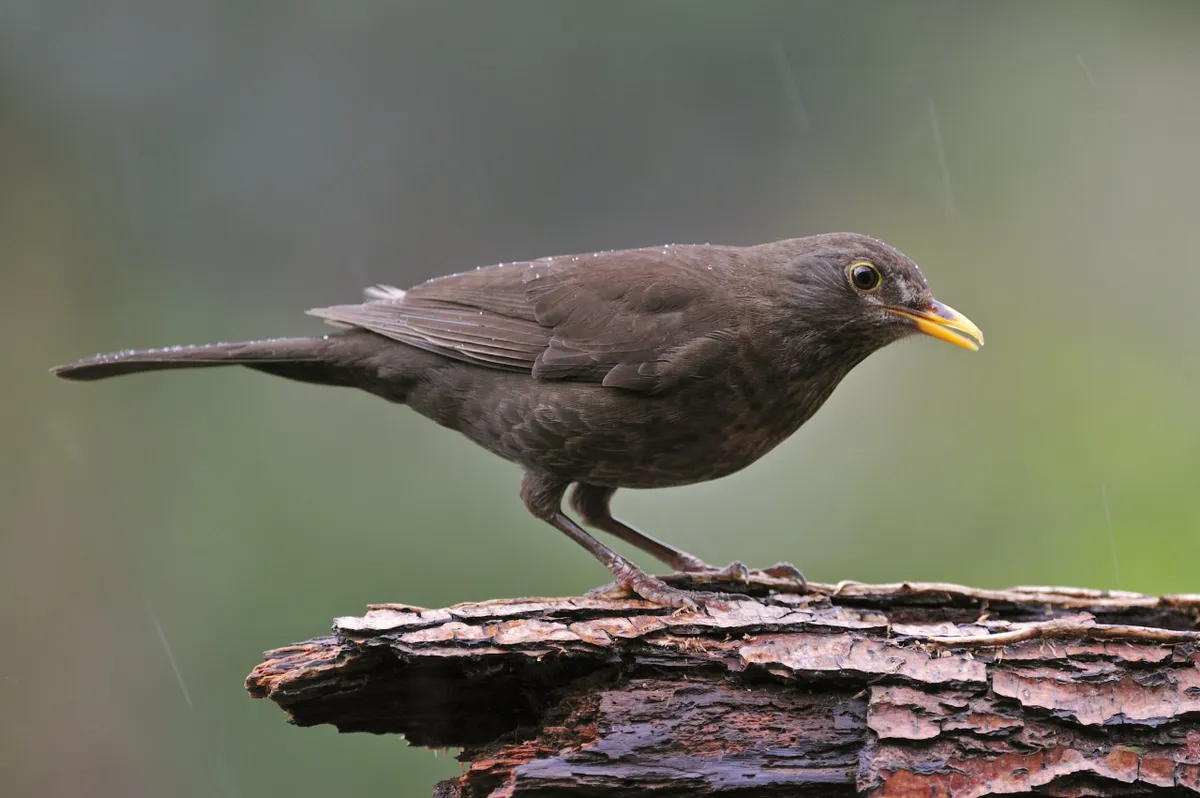
Juveniles are a warm brown with spotted plumage.

What do blackbirds sound like?
The male’s song is a fluty, melodic whistle. The song is sometimes heard after dark, as birds sing under artificial light. Calls are very loud and involve various clucking and rattling sounds.
Please note that external videos may contain ads:
BTO Bird ID - Nightingale and other night singers (including blackbirds, robins and song thrushes). © BTO
What time of year do blackbirds sing?
Although they can sometimes be heard singing in December and January, they mostly start singing during February. They usually stop singing during June.
What do blackbirds eat?
Invertebrates, especially earthworms. Fruit taken in autumn and winter.
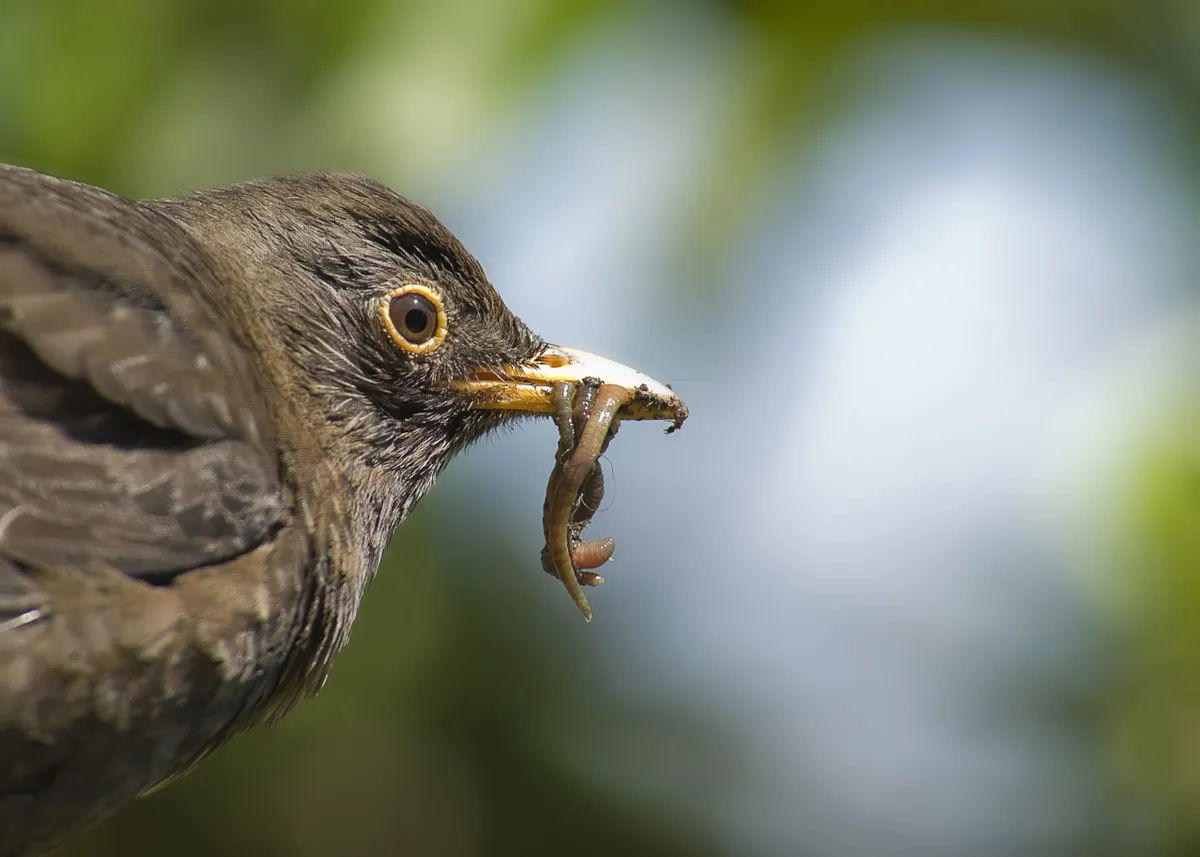
What predators do blackbirds have in gardens?
Mainly sparrowhawks but to a lesser extent, ground predators. Studies have shown that birds are more productive nesting in urban areas in comparison to those nesting in woodland. This is thought to have been caused by the lower rate of nest predation in gardens (50%) compared to woodland (80%).
How numerous are blackbirds?
According to data from 2016, there were 4.9 million pairs of blackbirds in Britain and 5.1 million pairs in the UK.
How long do blackbirds live for?
The typical lifespan for a blackbird is three years. However, the current longevity record for this species is 14 years and nine months.
When are blackbirds most frequently seen in gardens?
According to Garden BirdWatch data, which has been collected since 1995, they are most frequently seen in gardens during February, in around 97% of gardens.
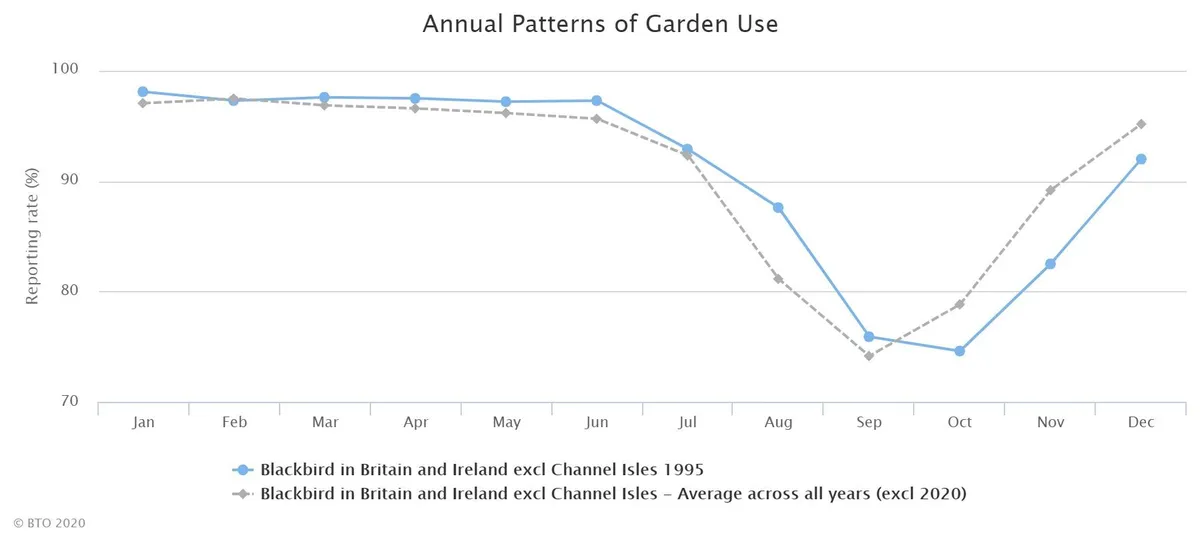
Do I see the same blackbirds in the garden each day?
Not necessarily! A colour ringing project in Norfolk showed that the greatest number of different blackbirds to visit the same garden in a day is 74. This shows that birds are constantly moving locally in search of food.
Are blackbirds increasing or declining in gardens?
Blackbird numbers in gardens have relatively consistent since Garden BirdWatch began.
Each year, there is an ‘Autumn trough’ of blackbird numbers in gardens from August until October. This is when many birds are moulting and there is plenty of food for them in the surrounding countryside.


When do blackbirds nest?
Blackbirds nest from March to July and they have up to three broods per year. They lay up to four eggs with are incubated for up to 14 days. The young tend to fledge after around 15 days.
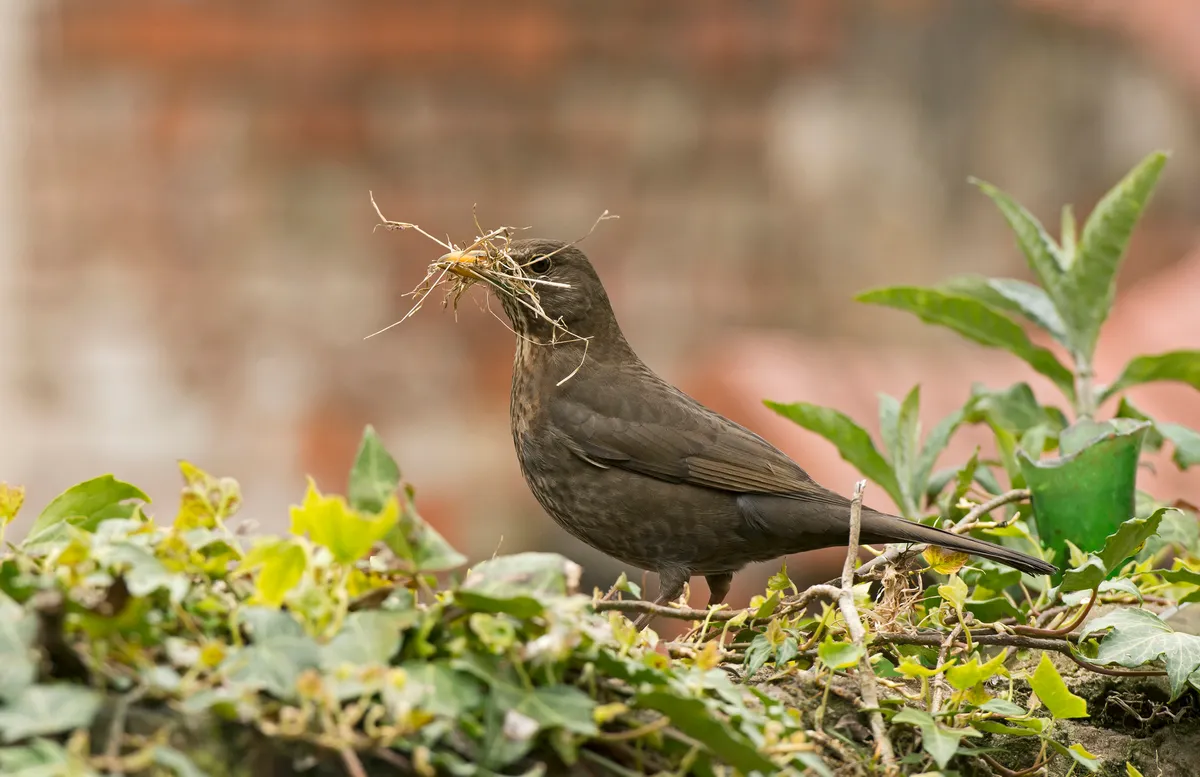
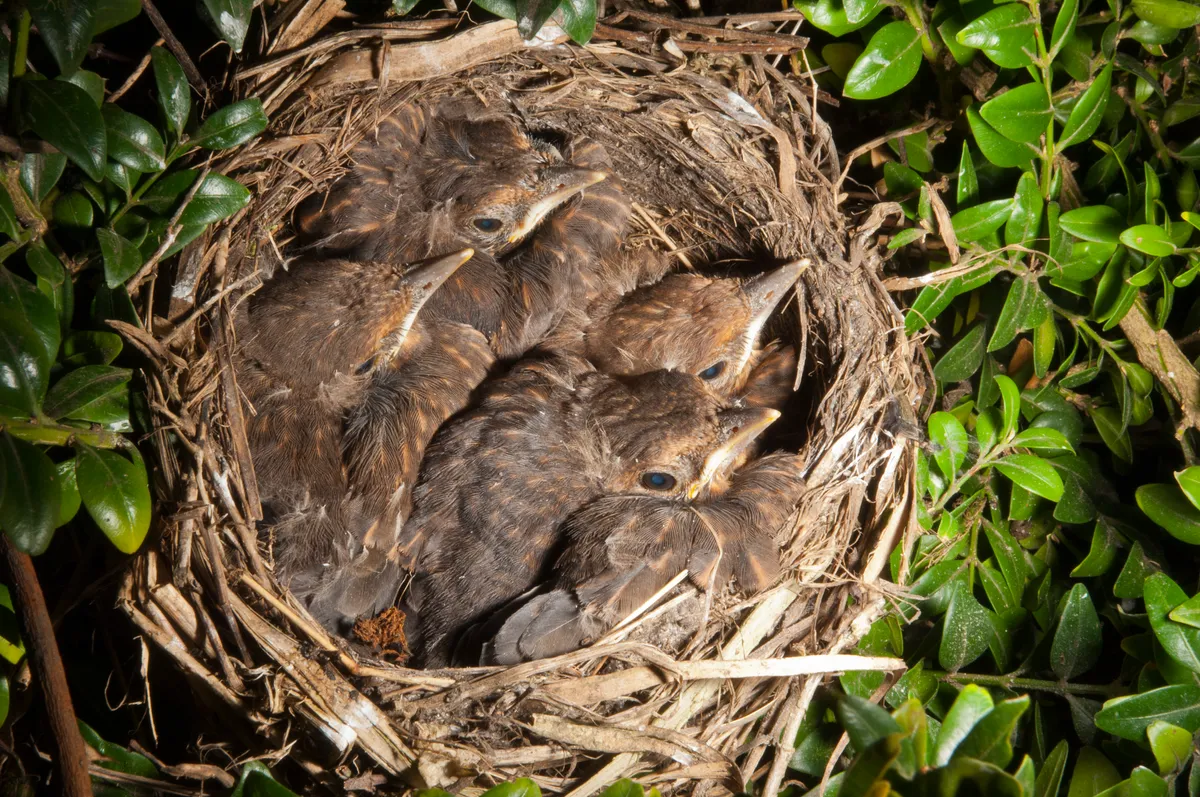
Do blackbirds use nestboxes?
Although blackbirds don't often use nestboxes, they will occasionally use open fronted nest boxes.
What can I do to help blackbirds in my garden?
Provide food on bird tables and windfall apples. Also provide a clean supply of water.
I’ve seen a blackbird with white feathers, what causes this?
Blackbirds and other species are sometimes affected by leucism, which is a lack of melanistic pigment in their feathering.
If you see an individual with unusual plumage in your garden, you can report it to the BTO's simple Abnormal Plumage Survey questionnaire.
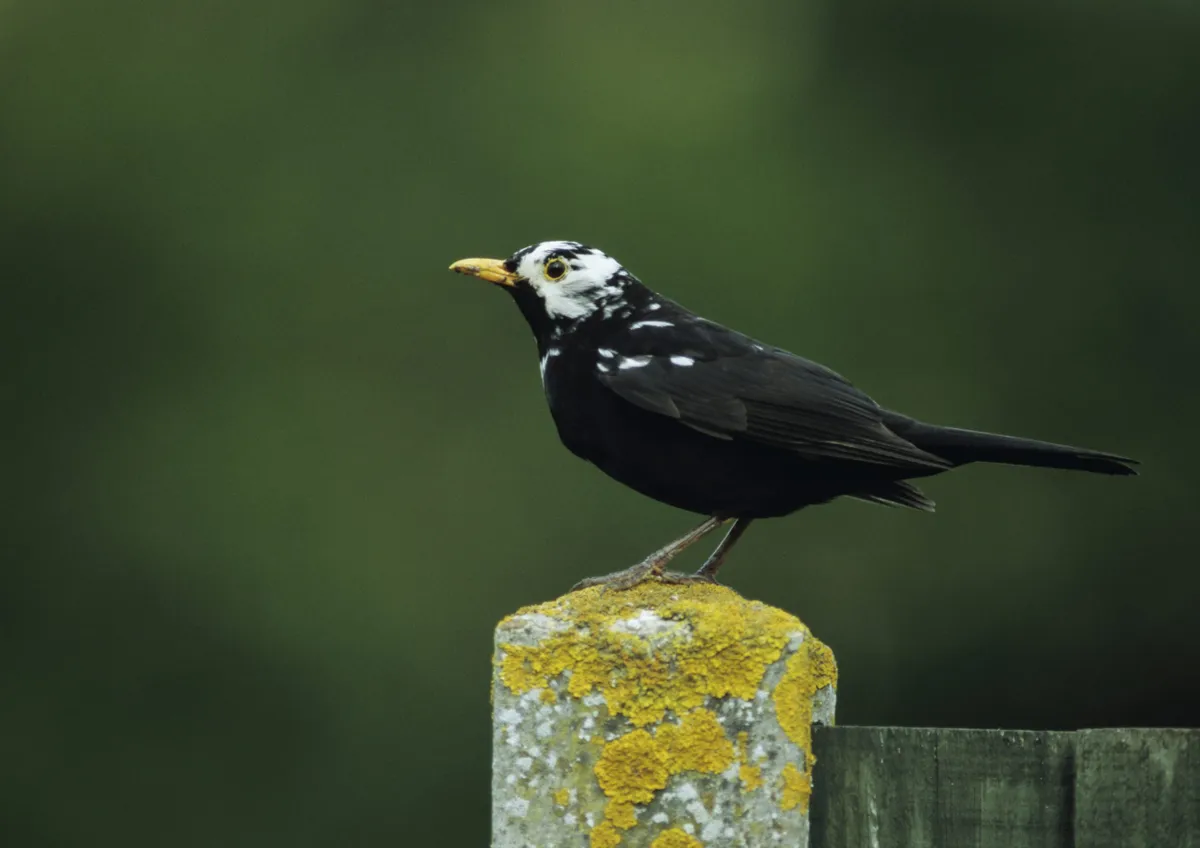
The British Trust for Ornithology (BTO) is a UK charity that focuses on understanding birds and, in particular, how and why bird populations are changing. Our vision is of a world where people are inspired by birds and informed by science.
Main image: Male blackbird. © Duncan Shaw/Getty
